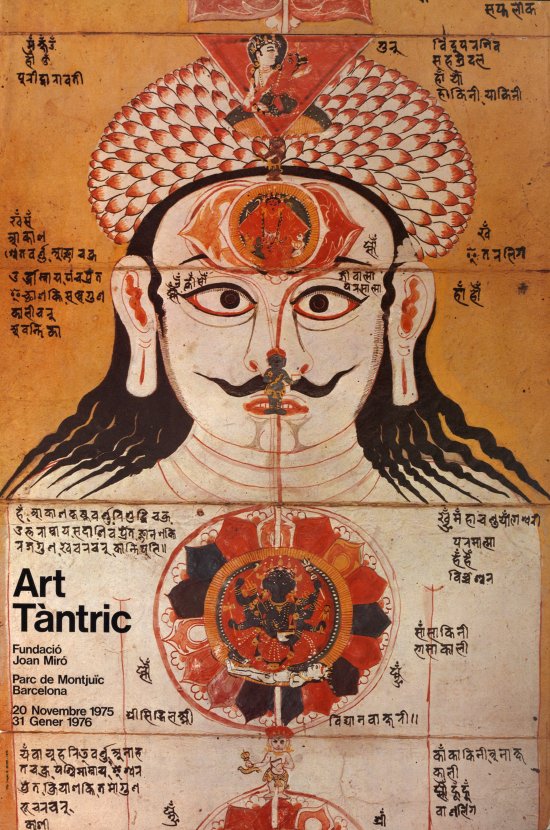- Dates
- —
- Curated by
- Ajit Mookerjee i Lluís Riera
Tantric Art
Tantra is a manifestation of sensibility, of the religious art of India. From Cape Comorin to the slopes of the Himalayas, Hindu religion today is essentially Tantric. This has been possible because Tantrism is not a religion, but a worldview, a way of looking at life, so it has therefore been able to penetrate the three great religions of India: Hinduism, Buddhism and Jainism. Tantrism was very soon accepted by Mahayana Buddhism and it was through this that it influenced China and Japan. Today, it plays an important role in Lamaism in Tibet and in Hinduism and Buddhism in Nepal. The word tantra comes from the Sanskrit root tan (‘to open’, ‘to expand’), and it refers to a system of rites and teachings as well as the texts that describe this system. The oldest surviving tantras were written around 600 AD, but the earliest Hindu and Buddhist texts contain many tantric elements, and some scholars believe that Tantrism originated in Vedic India, before the arrival of the Aryans, around 1,500 years before our times.
Tantrism and other religious and philosophical systems of India, especially within the circle of traditional Brahmanical orthodoxy, are based on a monistic conception of reality. The essential unity of Brahma (truth) has two aspects, symbolised by the static male principle (Shiva) and the dynamic female principle (Shakti). In contrast to what occurs in the West, it is notable that the female aspect is considered to be dynamic, the embodiment of energy, while the male aspect represents the static principle, the immobility of consciousness.
The combined play of these two cosmic forces – male and female – embodied in the vision of a cosmic sexuality from which the variety of apparent forms of the One Whole emanates, has led Tantrism to abandon the ideal of the ascetic life prevailing in India and to develop a cult of ecstasy, according to which pleasure deriving from the senses is the main means of attaining fulfilment and liberation.
The Tantrist must learn to identify with the cosmic play of pleasure and to recognise that what may appear to others as pain and misery is nothing more than an inevitable, necessary part of the creative fabric, in which personally experienced pleasure is the true reflection of cosmic delight. Sensation and emotion are the most powerful forces that move man, so they must therefore not be crushed and mortified, but united to the ultimate goal. Properly channelled, they can be an incomparable source of energy, benefiting society and ever increasing the ecstasy of the individual. However, one must – and all tantras insist on this – avoid falling into a complacent path of self-indulgence. One must make a clear distinction between the man who is a slave to appetites, sinking into an abyss that will bring him no fulfilment, and the initiated Tantrist who sees his senses and emotions as a means from which every sensitive experience can become a kind of accelerator that drives the person towards an ecstasy that will leave a trail of love and benefit.
This identification with cosmic energy, which demands a difficult elevation of human consciousness to ever-higher levels, is also revolutionary against the caste system typical of Hindu society. Many Tantrist-influenced rituals strike directly at the heart of Hindu social prejudices, teaching that pride of identity and reverential acceptance of the established social order are the most insidious and damaging mental obstacles on the path to liberation.
The works of art in this exhibition reflect this Indian spiritual orientation and confront Western viewers with the codes of conduct, rituals, magical techniques, myths and philosophy of Tantrism.
The collection on display belongs to the Tantra Museum in New Delhi, and it was built up by Ajit Mookerjee, to whom much of the credit for the current understanding of Tantric art belongs. Ajit Mookerjee is the author of the first and most important works on the subject. His work through conferences, books and staging exhibitions since 1955 has made Tantric art one of the most appreciated and renowned cycles of Indian art in the West over the past decade. The works on display in the spaces of the Fundació Joan Miró have been positioned with his direct involvement.


